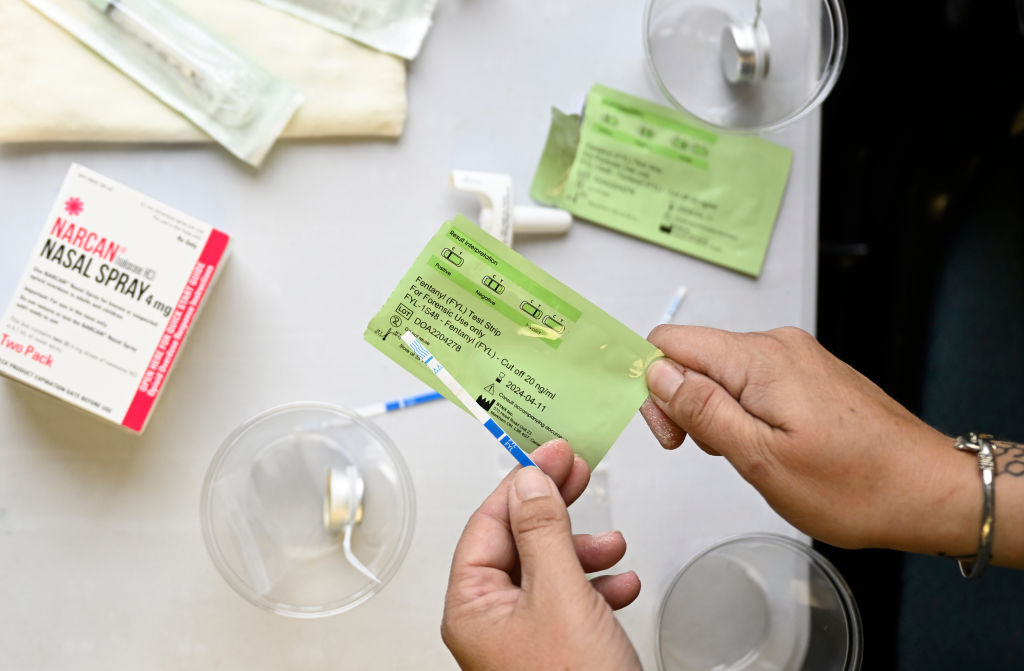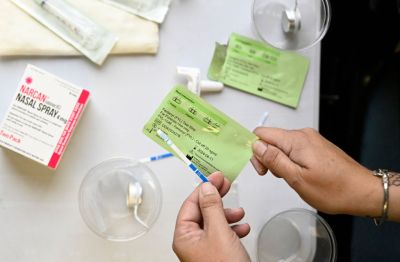Happy Tuesday! Congratulations to Taylor Swift on becoming the first musical artist to secure the top 10 spots on Billboard’s Hot 100 with her new album, Midnights. If there’s ever been a more impressive accomplishment in human history, we’re not aware of it.
Quick Hits: Today’s Top Stories
- At least 105 people are dead and dozens are still missing after Tropical Storm Nalgae battered the Philippines over the weekend. Rescue workers are still searching for others, particularly in a southern village where as many as 100 people may have been buried or swept away by landslides and flash floods.
- The European Union’s statistics agency reported Monday that annual inflation hit a record 10.7 percent in the Eurozone last month, up from 9.9 percent in September. A 42-percent year-over-year spike in energy prices was the largest contributor to the October figure, followed by a 13-percent increase in the cost of food, alcohol, and tobacco.
- Data collected by the pro-abortion-access Society of Family Planning suggest that, relative to a baseline monthly estimate from April, the overall number of legal abortions performed in the United States declined by nearly 10,600 in the two months after Roe v. Wade was overturned. States where abortion remains legal did see a spike in abortions performed as some women traveled to undergo the procedure, but all in all, the number of abortions performed in recent months—excluding illegal abortions—is down 6 percent.
- More than 24 hours after Brazil’s election authority declared leftist Luiz Inácio Lula da Silva the victor in the country’s presidential runoff election, incumbent President Jair Bolsonaro has yet to acknowledge the results or concede defeat—despite a growing number of allies encouraging him to do so. Bolsonaro’s communications minister said Monday the president will address the country publicly today after preparing remarks, but it’s not clear if those remarks will include a concession.
- As the demonstrations sparked by the death of 22-year-old Mahsa Amini in police custody enter their seventh week, Iranian protesters continue to defy regime officials who had formally declared the “end of the riots.” Iranian authorities said Monday that they plan to hold public trials for 1,000 people in Tehran for their alleged “subversive actions” amid the unrest.
‘Rainbow’ or Not, Fentanyl’s a Killer

Despite decades of urban legends and rumors about razor blades in apples or weed in candy, sociology and criminal justice researcher Joel Best has yet to document a single instance of children being seriously injured or killed by goodies they collected while trick or treating. After an August warning from the Drug Enforcement Administration, brightly colored “rainbow fentanyl” disguised as candy became the new bogeyman—though researchers cast doubt on the idea that bad actors would try to hook young children on hard drugs via Halloween candy.
But while opioid-laced trick-or-treat goodies don’t seem to have found their way into candy buckets, illicit fentanyl is a real and worsening public health disaster. Opioid deaths have been increasing in the United States for decades, but especially recently: Last year, drug overdoses killed more than 100,000 people in the U.S. for the first time. The mostly fentanyl category of “synthetic opioids other than methadone” accounted for 71,238 of those deaths. Fentanyl deaths have tripled among teens in recent years and are now the leading cause of preventable deaths for that age group in the U.S. To make matters worse, many users who overdose don’t even know they’re trying fentanyl.
Invented decades ago as a pain reliever, fentanyl is still used in the U.S. for severe surgical and cancer pain, useful because it relieves pain quickly and swiftly breaks down in the body. But illicit production and use have also skyrocketed because the lab-created opioid is cheaper and easier to produce than growing poppies and processing them into morphine and heroin. Currently, much of the illegal fentanyl flowing into the United States starts with precursor chemicals manufactured in China, then processed by cartels in Mexico and smuggled across the border. It’s more potent than heroin, so can be smuggled or mailed in smaller, easier-to-hide amounts.
But fentanyl isn’t just slightly more potent. It’s up to 50 times more powerful than heroin and 100 times more powerful than morphine, producing greater highs despite binding to the same receptors in the brain. It’s not deadly to the touch, but fentanyl does kill in tiny amounts. Here’s a lethal dose of heroin side by side with one of fentanyl, photographed by the New Hampshire State Police Forensic Lab:
Users or dealers handling amounts that small can easily mismeasure, unintentionally administering a lethal dose. Heroin users seeking a greater high from fentanyl can accidentally overshoot and after overdosing have a much shorter window for lifesaving treatment.
And that’s assuming users even realize they’re handling fentanyl—often not the case.
In past decades, heroin was at times mixed with cocaine but otherwise largely sold and used alone. That’s not the case for fentanyl. It’s often used to cut or replace heroin, and whether because of cross-contamination during production—or because dealers cut drugs with fentanyl to make smuggling easier or bring down costs while keeping potent highs—fentanyl is increasingly mixed into cocaine and pressed into pills purporting to be Xanax, Percocet, and other commonly-abused drugs. These colorful pills have helped give rise to “rainbow fentanyl” concerns, and synthetic opioids like fentanyl are now found in about 70 percent of heroin or cocaine-related overdoses.
Researchers have described the resulting deaths as more like being poisoned than a traditional drug overdose, and that’s part of why fentanyl has killed so many—from the singer Prince, found dead of a fentanyl overdose in an elevator in his mansion, to a 16-year-old who died in 2020 after taking a fentanyl-spiked pill he bought on Snapchat. “You get these various groups who are involved with fentanyl that might not—or likely would not—have been involved with heroin,” David Luckey—a RAND Corporation analyst who served on a congressional commission on combating synthetic opioid trafficking—told The Dispatch. “This is not just a new drug—this is a novel transformation in illicit substances.”
Policymakers and activists are scrambling for solutions. Republicans have emphasized increasing border enforcement to block the supply. The Biden administration set aside $1.5 billion in May for measures like distributing medications that treat opioid addiction and the overdose-reversing drug naloxone, commonly known as Narcan. Harm reduction clinics and online sellers offer testing strips that can check drugs for fentanyl—though the tests are considered drug paraphernalia and illegal in some states.
But none of these efforts alone will effectively reduce illicit fentanyl use and overdoses, Luckey emphasizes. The commission he served on identified a whopping 78 recommended action steps to reduce fentanyl trafficking. Those included updating U.S. drug regulations, interrupting more mail shipments, cracking down on drug traffickers’ money laundering and chemical purchases, expanding evidence-based substance abuse treatment, working with China and Mexico, and keeping better track of the opioid market—to name just a few. “These [overdose] numbers are only going up,” Luckey said. “If we don’t start pulling on those levers [of] supply reduction, demand reduction, and harm reduction, then the numbers will keep going up.”
Worth Your Time
- In a piece for the Wall Street Journal, Margot Patrick tells the stories of three New Yorkers who thought they were doing cocaine and ended up overdosing on fentanyl. “Her final week, [Julia] Ghahramani headed back to her Avenue B apartment, saying she had work to do before a family trip the next weekend to celebrate the Persian new year,” Patrick writes. She texted a number prosecutors later said belonged to the alleged dispatcher for a drug delivery service, and asked for cocaine. “Nine minutes after the texts, according to police and surveillance footage, [a courier] buzzed Ms. Ghahramani’s apartment bell. Around six hours after the delivery, her phone pinged. ‘Hey.’ ‘Hey you there?’ Seven calls came in that night and the next morning from the delivery-service number. [Ghahramani’s mother] woke that morning in Connecticut knowing something was wrong because she hadn’t heard from her daughter. A friend of [Julia’s] went to the apartment and found her dead, holding her phone. Persian pastries she had ordered for the weekend were in the refrigerator. ‘She made a mistake,’ [Julia’s father] said. ‘She had a hit of coke and unbeknownst to her it was loaded with fentanyl and it killed her.’”
- Sauk County, Wisconsin—referred to as the “politically swingiest county in one of the politically swingiest states in the country”—has an “uncanny” ability to go where the country is, voting for the victor in 10 of the last 11 presidential elections. “As the state faces high-profile contests for its governorship and a U.S. Senate seat that could determine which party controls the whole chamber—Democratic Gov. Tony Evers and Republican Sen. Ron Johnson, hoping to hold onto their jobs—Sauk County is a good place to study just what makes Wisconsin so, for lack of a better word, Wisconsiny,” Kathy Gilsinan reports for Politico. “Because Wisconsin, at least judging by its current vicious and expensive campaigns, is not so much purple as polarized; it’s a state where ‘median voter theorem’ goes to die. You might expect politicians in such a closely divided electorate to tack toward the center, take for granted their bases’ votes and cultivate just enough ideological crossover appeal to get to 51 percent. But … Wisconsin’s U.S. Senate delegation is perhaps the most polarized in the country, with the same state having sent to Washington, not two moderates, but one of the Senate’s most conservative members in Johnson and one of its most liberal in Tammy Baldwin.”
- Although today’s technology provides us with more opportunities to connect with others than ever before, Americans—particularly men—are experiencing an acute friendship crisis. “We have failed as a political community to consider this problem—much less genuinely address it,” Adam Carrington writes for Law & Liberty. “Our public policy must facilitate and promote friendship both at the level of citizen and in private relationships. At the private level, this entails a robust re-founding of community. We must encourage the civil associations that Tocqueville celebrated in Americans of the 1830s. Cultivating the mediating ‘little platoons’ found in gatherings of religious groups, book clubs, and hunting associations all can do much good on this project. They can help articulate meaning, worth, and dignity for the individuals involved. Perhaps the way our tax code aids charitable organizations can be expanded to other forms of association, giving a financial incentive to start organizations that will facilitate common bonds.”
Presented Without Comment
Also Presented Without Comment
Toeing the Company Line
- It’s Tuesday, which means Dispatch Live (🔒) returns tonight at 8 p.m. ET/5 p.m. PT! With election night now just one week away, join Sarah, Steve, Chris Stirewalt, and others for a discussion about what races they’ll be watching, which party has the momentum, and their overall expectations for the midterms. And as always, there will be plenty of time for questions from members.
- This week’s Wanderland (🔒) focuses on the one economic statistic that matters: real wages. “Americans have taken their biggest inflation-adjusted pay cut in about a quarter-century,” Kevin writes. “Democrats from Joe Biden on down are going to be blamed for that.” Plus: some rank punditry on Nevada, why that $1.7 million toilet in San Francisco costs $1.7 million (hint: marginal costs), and more.
- On today’s episode of Advisory Opinions, David and Sarah dive into affirmative action oral arguments before the Supreme Court yesterday—with a particular focus on the University of North Carolina case. Is it possible for race-neutral criteria to still be racially discriminatory? Who should bear the brunt of righting a historic wrong? And how should we understand diversity?
- On the site today, Andrew Egger and Harvest Prude dig into how GOP candidates are using the recent surge in illegal border crossings to motivate key Republican voters.
Let Us Know
Do you know anyone who's had a dangerous brush with fentanyl?






Please note that we at The Dispatch hold ourselves, our work, and our commenters to a higher standard than other places on the internet. We welcome comments that foster genuine debate or discussion—including comments critical of us or our work—but responses that include ad hominem attacks on fellow Dispatch members or are intended to stoke fear and anger may be moderated.
With your membership, you only have the ability to comment on The Morning Dispatch articles. Consider upgrading to join the conversation everywhere.